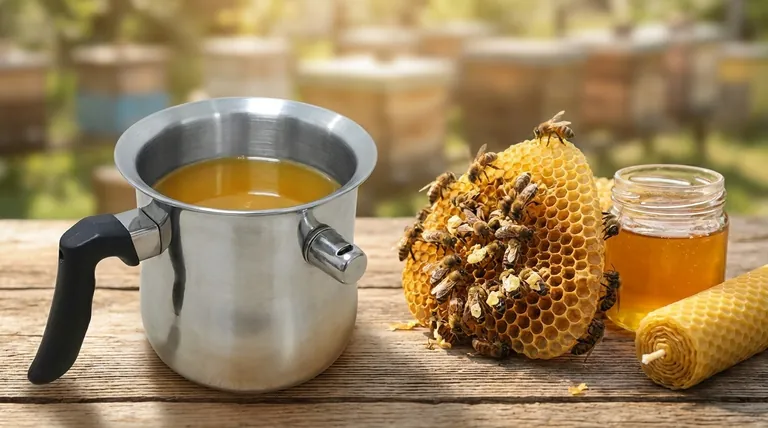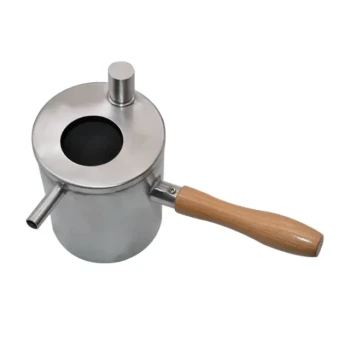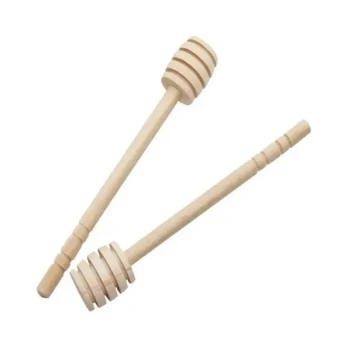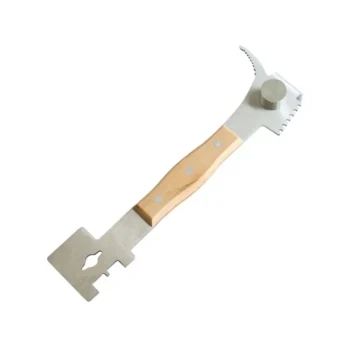Bees produce wax through specialized glands on their abdomen, which they then use to construct the hexagonal comb structures in their hives. This comb serves dual purposes: storing food like honey and pollen, and providing a space for brood rearing. The wax production is a fascinating example of nature's efficiency, as bees meticulously craft these structures to maximize space and resource utilization within the hive.

Key Points Explained:
-
Wax Production Process:
- Bees have eight wax-producing glands located on the underside of their abdomen.
- These glands secrete small flakes of wax, which the bees chew and mold into the desired shape.
- Younger bees (typically 12–18 days old) are the most active wax producers, as their glands are fully developed during this period.
-
Comb Construction:
- Bees use the wax to build hexagonal cells, a design that optimizes space and material efficiency.
- The comb serves as the structural foundation of the hive, similar to how a beeswax foundation mill provides a base for beekeepers to encourage comb building.
-
Primary Uses of Beeswax:
- Food Storage: The comb stores honey, nectar, and pollen, ensuring the colony has a steady food supply.
- Brood Rearing: The cells are also used to house eggs, larvae, and pupae, supporting the colony's growth and sustainability.
-
Efficiency and Adaptability:
- The hexagonal shape of the comb allows for maximum storage with minimal wax usage, showcasing the bees' instinctive engineering skills.
- Bees can adjust the size of the cells depending on their needs, such as larger cells for drone brood or smaller ones for worker bees.
-
Human Applications:
- Beyond the hive, beeswax is harvested for products like candles, cosmetics, and food wraps, thanks to its natural durability and water-resistant properties.
- Beekeepers often use foundation sheets made from beeswax to guide bees in building straight, manageable combs, streamlining hive maintenance.
Have you ever wondered how such small creatures can create such perfectly symmetrical structures without any measuring tools? This natural precision highlights the incredible adaptability and intelligence of bees, whose wax production not only sustains their colonies but also benefits humans in numerous ways.
Summary Table:
| Aspect | Key Details |
|---|---|
| Wax Production | Secreted by abdominal glands; chewed and shaped by young bees (12–18 days old). |
| Comb Construction | Hexagonal cells optimize space for food storage and brood rearing. |
| Primary Uses | Stores honey/pollen; houses eggs/larvae; used in candles, cosmetics, and more. |
| Efficiency | Adjustable cell sizes; minimal wax usage for maximum storage. |
Need high-quality beekeeping supplies for your apiary? Contact HONESTBEE today for wholesale solutions!
Visual Guide

Related Products
- Beeswax Melter for Candle Making Honey Bee Wax Melter
- Steam Beeswax Melter Wax Warmer for Wax Processing
- Professional Stainless Steel Wax Melter for Beekeeping and Crafts
- Honey Wax Separating Wax Press with Metal Screw Wax Separator Machine
- Electric Beeswax Flat Sheet Machine with Operating Tray for Wax Processing
People Also Ask
- What is the best way to melt beeswax for candles? The Safest Method for Professional Results
- What is the flashpoint of beeswax? Essential Safety and Quality Tips for Beekeepers
- How does a steam wax melter work? A Fast, Efficient Method for High-Quality Wax
- What are the primary products of honey bee farming besides honey? Discover the Hive's Hidden Treasures
- What makes polyurethane foam environmentally friendly? The Surprising Benefits of a Durable, Inert Material



















